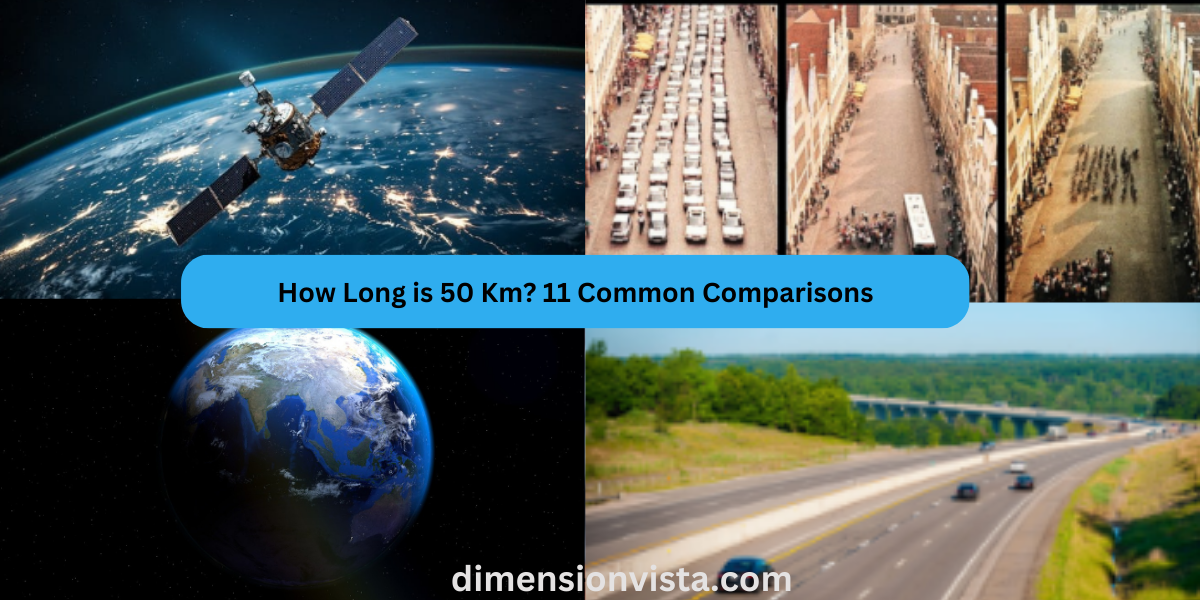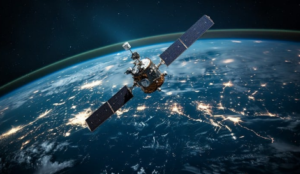When someone mentions a distance of 50 kilometers (km), it might be hard to visualize just how far that is. Is it a manageable distance for a long walk, a short drive, or an epic cycling journey? Understanding 50 km in relatable terms can help you better grasp its scale. Whether you’re a runner, a traveler, or just curious, this article will break down how long 50 km is with 11 common and practical comparisons.
By the end of this read, you’ll have a clear understanding of what 50 km means in everyday life and how it compares to other distances you might encounter. Let’s dive in!
What Does 50 Km Mean?
Fifty kilometers, equivalent to 31.07 miles, is a unit of measurement commonly used in countries that follow the metric system. To put it into perspective:
- In Driving Terms: At an average highway speed of 100 km/h, it would take roughly 30 minutes to drive 50 km.
- In Walking Terms: For a person walking at an average pace of 5 km/h, covering 50 km would take about 10 hours.
- In Running Terms: A seasoned marathon runner, maintaining a speed of 10 km/h, could complete 50 km in about 5 hours.
How Long is 50 Km? 11 Common Comparisons
1. The Length of a Marathon and Beyond
A standard marathon is 42.195 kilometers. This means 50 km is slightly longer than a marathon, making it a popular distance for ultramarathons long-distance races designed for elite athletes or those looking for a challenging feat. If you’ve ever run a marathon, imagine pushing through for an additional 7.8 km!
2. Commuting Between Cities
Fifty kilometers is often the distance between small towns or neighboring cities. For instance:
- Driving from San Francisco to Palo Alto (about 54 km).
- Traveling from London to Brighton (about 50 km).
This makes 50 km a reasonable distance for daily commuting by car or train in many regions.
3. Walking Across an Entire City
In major metropolitan areas, walking 50 km could mean crossing the city from end to end. For example:
- Walking across New York City, from the Bronx to Staten Island, covers roughly 50 km.
- Traversing Tokyo’s 23 wards, though ambitious, also spans a similar distance.
If you’re a tourist, covering 50 km in one day might involve extensive sightseeing.
4. Cycling Distance for Enthusiasts
For avid cyclists, 50 km is a common benchmark for a medium-length ride. A recreational cyclist could cover this distance in about 2-3 hours, while a competitive cyclist might finish in under 90 minutes.
Cycling 50 km is also a key training milestone for those preparing for longer rides, such as century (100 km) events.
5. The Depth of the Earth’s Crust
Interestingly, the average thickness of the Earth’s crust beneath continents is about 50 km. So, if you were to dig straight down through the crust, you’d travel the same distance as walking or running 50 km horizontally. This gives a new perspective on how vast and deep our planet is.
6. Driving Time on Highways
Driving 50 km on a highway at 100 km/h takes just 30 minutes. This is comparable to commuting from one suburb to another or traveling to nearby tourist attractions. At slower city speeds (50 km/h), the trip would take closer to an hour.
7. Airplane Taxiing on a Runway
Though not common, airplanes taxiing on runways can cover significant distances. For example, taxiing on airport grounds for long flights, combined with runway lengths, can cumulatively reach up to 50 km. This comparison highlights how vast airport infrastructures can be.
8. Equivalent to 500 Football Fields
A standard football field, including end zones, is about 100 meters long. Therefore, 50 km equals 500 football fields laid end to end. Imagine walking or running the length of 500 fields nonstop!
9. The Length of a Half-Day Hiking Trail
For experienced hikers, a 50 km trail could take 10-12 hours to complete, depending on terrain and elevation. Some popular long-distance trails, like sections of the Appalachian Trail or Camino de Santiago, can easily span 50 km in a single segment.
10. Public Transit Comparisons
In urban areas, public transit systems often cover distances of 50 km or more. For example:
- The London Underground’s Jubilee Line stretches approximately 50 km.
- The New York City Subway’s A Line is around 50 km long from end to end.
- This distance showcases the scale of infrastructure in large cities.
11. Orbiting the Earth in Space
Although space travel operates on much larger scales, 50 km is roughly 1/800th of the Earth’s circumference (40,075 km). Satellites in low Earth orbit (LEO) often maintain distances that exceed 50 km from the surface, putting this distance into a cosmic context.
Conclusion
Understanding 50 km becomes easier when you relate it to common experiences like running a marathon, cycling a trail, or driving between cities. Whether you’re considering it for athletic challenges, travel, or daily commutes, 50 km is a versatile and tangible distance that connects us to various aspects of our world.
Next time someone mentions 50 km, you’ll have plenty of real-world comparisons to put it into perspective. Ready to explore this distance in your own life? Start planning your next journey today!












